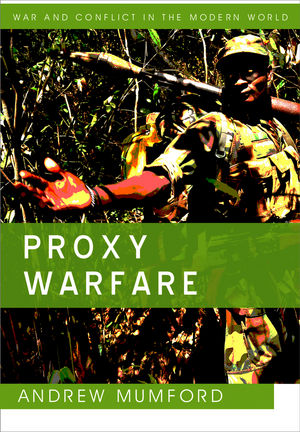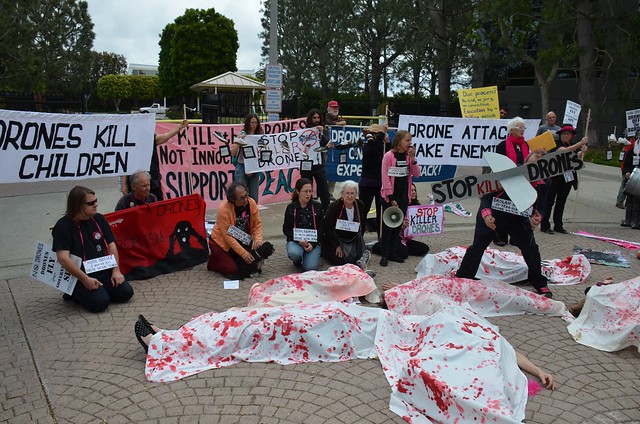Proxy wars represent a perennial strand in the history of conflict. The appeal of ‘warfare on the cheap’ has proved an irresistible strategic allure for nations through the centuries. However, proxy wars remain a missing link in contemporary war and security studies, argues Andrew Mumford, who in this book aims to shed new light on the dynamics and lineage of proxy warfare from the Cold War to the War on Terror, whilst developing a cogent conceptual framework to explain their appeal. Jeff Roquen finds that this is a timely and welcome contribution to the literature.
 Proxy Warfare. Andrew Mumford. Polity Press. May 2013.
Proxy Warfare. Andrew Mumford. Polity Press. May 2013.
What do the Spanish Civil War (1936-39), the Second World War (1939-45), the Vietnam War (1955-75), the Angolan Civil War (1975-2002), and the ongoing war in the Congo all have in common? Aside from obvious shared characteristics such as indescribable scenes of violence, heartbreaking numbers of civilian casualties, intense suffering of large refugee populations and the use of well-crafted propaganda campaigns, each of these conflicts involved proxy warfare. Despite decades of prolific scholarship on a wide variety of theoretical and historical aspects of international relations, few studies have examined how and why nations choose to fight adversaries indirectly by aiding and abetting their enemies. In Proxy Warfare, Andrew Mumford delivers a brief yet trenchant analysis on a long-neglected phenomenon relevant to both history and the world of the twenty-first century.
At the outset of the book, Mumford furnishes a finely-tuned definition of his subject. In contrast to covert war, states or non-state actors engaged in proxy warfare do not place their own forces on the ground. They merely attempt to tip the balance of a conflict by lending financial and/or military assistance to one or more belligerents. While proxy and covert intervention are often carried out simultaneously, it can only be done in the absence of any direct involvement. As soon as the first American combat soldiers entered Vietnam in February 1965, the nature of Washington’s intervention changed from proxy/covert to direct engagement. Or did it?
Due to the rapid evolution of military technology over the past half century, distinguishing between direct and indirect interventions has become problematic. For example, Mumford considers the use of UAVs (Unmanned Aerial Vehicles – commonly known as drones) as a form of direct intervention – despite the absence of an actual combatant on or over the field of battle. At the same time, he casts the dispatch of military advisers to a surrogate nation (i.e. American military advisers in South Vietnam in the early 1960s) as a method of proxy warfare. Although seemingly contradictory at first glance, Mumford’s typology is both logical and consistent. The key to his definition of proxy intervention and proxy warfare (used interchangeably by the author) is the level of engagement. Whereas military advisers only provide training (proxy assistance), drones are guided and fired by American military experts directly upon enemies.

Significantly, Mumford’s framework also aligns on a grand historical scale. When Franklin Roosevelt steered the Lend-Lease Bill through Congress in 1941 to supply munitions to Great Britain and its allies, it was perhaps the quintessential act of proxy intervention. Roosevelt provided the firepower, and Churchill fired on Nazi Germany on behalf of American interests. Furthermore, it is equally important to consider the relationship between Britain and the United States prior to the Japanese attack on Pearl Harbor in relation to Mumford’s definition. If London and Washington had been tied to a strictly defined mutual defense treaty, collective security agreement or military alliance, then Roosevelt’s aid to Britain would not have constituted a proxy intervention.Thus, proxy intervention and/or warfare can only occur if 1) the benefactor nation takes no active role in combat and 2) acts to support its proxy surrogate in a non-allied or quasi-allied context. Aside from possible exceptions to the rule, both political and military support must be indirect.
Considering its widespread employment throughout history and in the current global arena, the paucity of studies on proxy warfare reflects a significant gap in scholarship. To justify his investigation, Mumford cites compelling evidence from two key international relations (IR) scholars – K. J. Holsti and the late Hedley Bull. While the former concluded that nearly one-third of the conflicts in the half-century after the Second World War involved “external intervention”, the latter rightly noted that a seismic shift in warfighting had occurred in the Cold War era. As direct confrontation could have sparked a nuclear exchange fatal to much of the world, the United States and the Soviet Union turned to proxy warfare to secure their objectives.
The author reveals his theoretical slant in the second chapter. Instead of a devout disciple of one particular school of thought, Mumford cogently blends the constructivist analysis of IR scholar Richard Ned Lebow, the realism of Hans Morgenthau and the Cold War historical scholarship of John Lewis Gaddis to examine the motives of proxy warfare. According to Lebow, less than thirty percent of all wars from the Thirty Years War (1618-1648) to 2008 were motivated by resource acquisition (i.e. precious metals, oil, water etc.) or pure security concerns. Hence, ideology for both Lebow and Mumford has been the defining factor behind the decisions of states to embrace proxy warfare in the modern states-system era. Undoubtedly, their stance will be contested by ultra-realist and Marxist scholars alike.
In Chapter 3 “Who Engages in Proxy War?” and Chapter 4 “How Are Proxy Wars Fought?,” Mumford investigates the motives and means of proxy warfare in a series of short case studies. Two of these analyses, which relate to the 2003 Iraq War, explore the recent proxy battles in Iraq between Iran and the United States. To counter the Iranian al-Quds paramilitary force inside Iraq, the Bush administration employed a previously unthinkable strategy. In training Sunni militias – some of which had been loyal to Saddam Hussein – to fight against the al-Quds force and Al-Qaeda in Iraq (AQI), America had returned to its proxy roots in both the Truman and Reagan Doctrines. To combat tyranny and “make the world safe for democracy” – as famously uttered by President Woodrow Wilson in his war address (2 April 1917), Washington has both ramped up covert action and opportunistically re-embraced proxy warfare to advance American interests.
For nearly four centuries, states have embraced proxy intervention as a cost-effective and politically feasible measure to weaken adversaries. In a new millennium marked by decentralized terrorist groups and the rise of China, proxy warfare will continue to be a key component of international relations for the foreseeable future. As such, Mumford’s work is a timely and welcome contribution.
————————————————-
Jeff Roquen is an independent writer and PhD student in the Department of History
at Lehigh University (Pennsylvania, USA). Read more reviews by Jeff.







